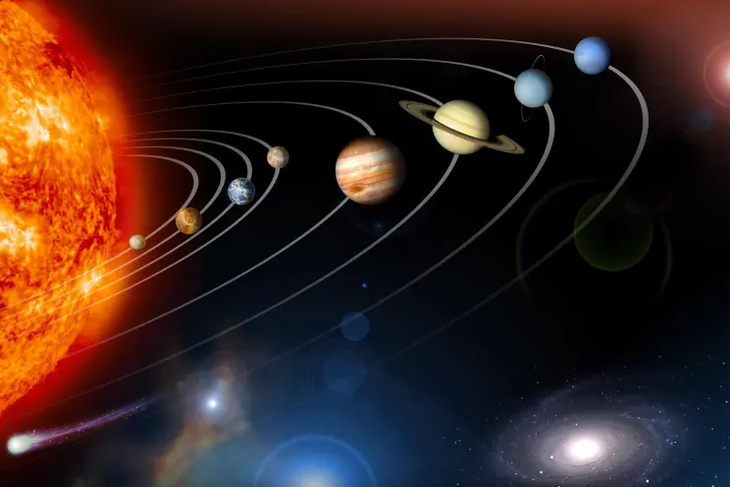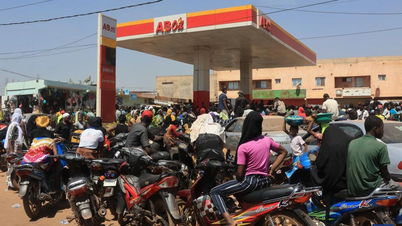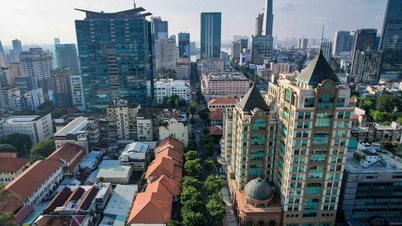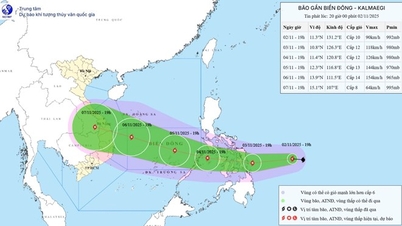
Despite being the "youngest", our Earth has the most ideal living conditions among the 8 planets, partly thanks to the "support" from giant planets that formed tens of millions of years before it - Photo: NASA
The sun was born first
About 4.5 billion years ago, a giant cloud of gas in space collapsed under gravity and gave birth to the Sun, the central star of the planetary system in which we live.
The remaining gas and dust did not disappear but spread out into a disk of material revolving around the Sun. In that disk, small dust particles began to collide, stick together, grow into rocks, and then into objects large enough to become planets. This process is called accretion .
When the Sun was young, there was a temperature boundary in its disk where gas and water could freeze, called the snow line . This boundary was located about halfway between the present-day locations of Mars and Jupiter .
Outside the ice line , matter has more ice, which easily coalesces into giant planets like Jupiter, Saturn, Uranus, and Neptune .
Inside the ice line there was less snow, gas and dust so planets like Mercury, Venus, Earth, and Mars formed more slowly, and were smaller.
The sequence of the planets' birth
Based on computational models and observations from telescopes, astronomers believe that Jupiter and Saturn are the two earliest planets to form, just a few million years after the Sun appeared.
Next are Uranus and Neptune , within about 10 million years.
The inner planets, including Earth, took at least 100 million years to complete.
That is, the distant giant planets are the "big brothers" , and Earth is the "youngest brother" of this planetary system.
Although nearly 90 million years apart, in the scale of the universe, that is just "a blink of an eye", less than 1% of the age of the universe.
The planet also "migrates"
What's more interesting is that planets don't "stay still" from birth. After forming, they move , some getting closer to the Sun, others drifting away, before settling down in their current positions.
Jupiter once moved closer to the Sun, sucking in several small planets, pushing many meteors away or into the asteroid belt. Neptune also pushed millions of small objects to the edge of the Solar System, creating the Kuiper Belt, home to dwarf planets like Pluto.
Importantly, thanks to Jupiter's gravity and orbit, Earth has been "pushed" into the habitable zone (Goldilocks Zone), not too hot, not too cold, with enough conditions for liquid water to exist and life to appear.
Without Jupiter, Earth might very well have been located elsewhere, and life as we know it today… might not have existed.
Source: https://tuoitre.vn/hanh-tinh-nao-trong-he-mat-troi-duoc-sinh-ra-truoc-20250521203901639.htm




![[Photo] President Luong Cuong receives US Secretary of War Pete Hegseth](https://vphoto.vietnam.vn/thumb/1200x675/vietnam/resource/IMAGE/2025/11/02/1762089839868_ndo_br_1-jpg.webp)
![[Photo] Lam Dong: Images of damage after a suspected lake burst in Tuy Phong](https://vphoto.vietnam.vn/thumb/1200x675/vietnam/resource/IMAGE/2025/11/02/1762078736805_8e7f5424f473782d2162-5118-jpg.webp)

































































































Comment (0)